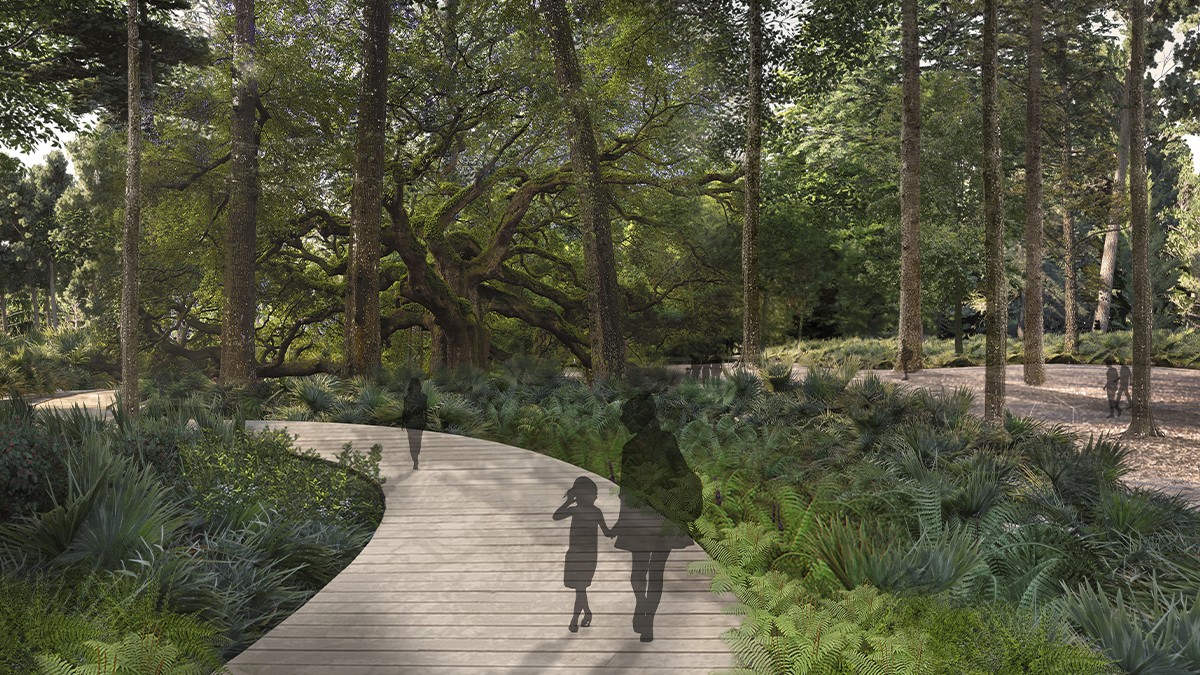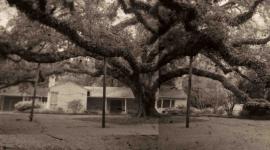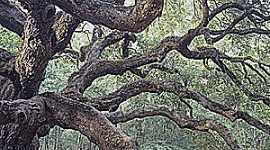Landslide Update: Nelson Byrd Woltz to Design Angel Oak Preserve
At 65 feet tall, with a 25.5-foot circumference at breast height, and a broad, horizontally oriented canopy that shades an area of 17,000 square feet, the Angel Southern Live Oak is both an icon and a behemoth. Many of its tentacle-like branches dip down to and snake along the ground plane. It is located in a park on Johns Island, South Carolina, just outside of Charleston, and has served as a gathering site for local communities, including the Gullah/Geechee peoples, for generations. In 2007, the 400-500 year-old landmark became threatened by development and The Cultural Landscape Foundation (TCLF) featured it in the annual Landslide report and traveling photographic exhibition, Landslide 2007: Heroes of Horticulture.
In 2008 a critical 35-acre, forested parcel contiguous to the park became slated for development and advocates, led by Samantha Siegel, launched a grassroots campaign to purchase the property. Recognizing that with development pressure the tree’s long-term health and survival was in jeopardy, a groundswell of public support strove to safeguard the integrity of the Angel Oak’s ecological and historical setting. Local non-profit organizations, including Save the Angel Oak, Coastal Conservation League, and South Carolina Environmental Law Project, collaborated with the Gullah/Geechee Nation, Charleston County Greenbelt Program, South Carolina Conservation Bank, the City of Charleston, and more than 12,000 individuals to raise enough funds to acquire the property.

In 2014 the nonprofit organization, Lowcountry Land Trust, purchased the parcel, and two years later conducted extensive historical research and public engagement activities in order to better understand the site’s cultural and ecological significance. The organization reviewed relevant case studies to determine how to best provide public access to the property, which was renamed the Angel Oak Preserve; Samantha Siegel, who led the 2008 campaign, is its director.
In 2022 the Lowcountry Land Trust engaged the firm Nelson Byrd Woltz Landscape Architects to prepare a comprehensive plan for the Angel Oak Preserve, which nested the existing two-acre, city-owned parcel into the contiguous property. The plan, unveiled in 2023, aims to preserve and protect the Angel Southern Live Oak, the surrounding forest, and the historic spatial integrity, while improving accessibility, circulation, and enriching on-site interpretation.

As proposed, a curvilinear, raised boardwalk trail encircles the specimen tree and the surrounding grove, limiting compaction to the tree’s expansive root system. Additional trails navigate the park, skirting historic resources, notably the remnants of enslaved peoples’ cabins. The trail network will lead visitors through distinct ecological zones and will be punctuated by places for gathering, including a pavilion, an outdoor classroom, and a “nature play area.” The preserve will also feature interpretive markers and a welcome center, designed by Liollio Architecture, that reveals the site’s cultural and ecological significance. The project is expected to break ground later this year.







